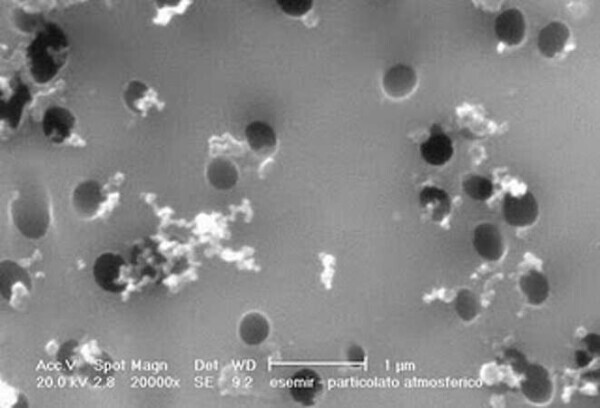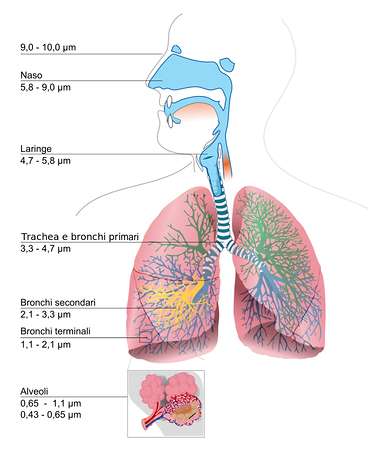Dust: nature, health effects and how to filter it
Origin, nature, physical/chemical characteristics and technologies for dust treatment
This article aims to delve into the topic of dust by analyzing its origin, characteristics and health effects. As we know, they are among the main pollutants present in our atmosphere, but if we wanted to give a definition of “dust,” what words should we use? Let’s see it together.
Definition of dust
Dust is a mixture of airborne particles characterized by sizes ranging from 1 to 100 microns (μm).
These particles can result from two different types of sources:

- Primary sources: direct emission of particulate matter into the atmosphere. In this case, they can originate from both natural sources (volcanic eruptions, spontaneous combustion of forests, pollen…) and anthropic sources (traffic, industrial processes, heating, etc.);
- Secondary sources: derived from the condensation and subsequent transformation into aerosols of molecules present in the gaseous phase. In this case, we have the formation of small-sized particles resulting also from the chemical transformation of particulate. Examples include sulfur dioxide, ammonia, nitrogen monoxide, etc..
Powders originating from anthropic processes stem from numerous operations and it is impossible to provide an exhaustive list. Among the main ones, we can mention:
- Storage, handling, pneumatic transport, mixing, weighing and packaging of powdery solid materials;
- Grinding, sandblasting, sanding, edging, cutting of surfaces of various types and materials;
- Operations typical of the polymer, elastomer and thermosetting industries;
- Melting of metal, glass and other materials;
- Combustion of solid material and waste;
- Powder coating operations;
- Drying operations of solid or similar material;
- Oxy-fuel, plasma and laser cutting operations;
- Mechanical surface cleaning operations;
- Welding operations
Particle size distribution and physical-chemical characteristics of powders
Two different conventions are generally used to identify particles:
- dosimetric classification: based on the ability of dust to penetrate different parts of the respiratory system;
- modal classification: based on formation mechanisms and distribution (by size). It is the most used mode and, simplifying, it provides two main fractions called “fine” and “coarse”. The fine fraction contains all particles with an aerodynamic diameter less than 2-2.5 μm, while the coarse fraction contains those with a greater aerodynamic diameter.
Regarding particle size, we often talk about particle size distribution or granulometry. These are tools and diagrams resulting from specific tests, which accurately represent the dimensional trend of powders contained in a sample (such as exhaust gases from industrial processes, for example).
The average dust sizes has a direct influence on various significant aspects such as:
- ability to propagate the flame;
- behavior concerning physical forces (centrifugal force, gravity…);
- inhalability: fine dust are inhalable and can directly enter in the blood (under certain sizes), while medium and coarse powders are trapped in the outermost respiratory systems of humans and animals. We will delve into this aspect in the next section dedicated to health effects.
The chemical characteristics of powders also influence various relevant aspects:
- flammability and explosiveness of the powders themselves: under certain conditions, powders must be treated and managed using equipment certified according to specific regulatory standards (read our article on the ATEX directive for further insights);
- the toxicity that some compounds show compared to others.
Dust: health effects
Regarding human and animal health, we can say that dust has different effects depending on its origin (natural or anthropogenic) and particle size. Generally, health risks are assessed by considering the particles’ ability to penetrate the respiratory system. As you can imagine, this factor is determined by the size of the powders. In particular:
- coarse particulate matter – sedimentable particles larger than 10 µm generally resulting from erosion or industrial processes. They settle on the ground fairly quickly and are unable to penetrate beyond the larynx into the respiratory tract, except in small amounts;
- PM10 – particulate matter consisting of particles smaller than 10 µm (i.e., smaller than one-hundredth of a millimeter). These are thoracic particles capable of reaching trachea and bronchi. Particles between about 5 and 2.5 µm deposit before reaching the bronchioles;
- PM2.5 – ultrafine particulate matter with a diameter smaller than 2.5 µm (a quarter of a hundredth of a millimeter). This is inhalable dust, able to penetrate deeply to reach the alveoli and transmit into the bloodstream through them.

Particles with an aerodynamic diameter of less than or equal to 10 μm and those less than or equal to 2.5 μm, due to their health effects, are the subject of most air pollution studies. They are characterized by long residence times in the atmosphere and can therefore be transported over long distances from the point of emission, increasing negative health effects. These effects vary depending on the types of powder, the chemical characteristics and the amount inhaled. The table below lists some more or less severe diseases related to dust inhalation.
| Material | Characteristics | Diseases |
|---|---|---|
| Asbestos | A set of minerals that, to become asbestos, undergo hydrothermal processes. Due to their toxicity, processing and sale of these minerals have been forbidden in many countries. | Asbestosis: chronic lung disease Lung carcinoma: lung cancer |
| Silica | Compound of silicon (Si) which pure appears as a white crystalline powder. It is responsible for disabling pathologies. | Silicosis: chronic lung disease related to silicon inhalation |
| Talcum | Class 2B substance considered potentially carcinogenic to humans | Talcosis: chronic lung disease related to talc inhalation |
| Powders of metals such as cadmium and beryllium | Heavy metals considered to be predominantly toxic | Pneumopathy: inflammation of lung tissues or bronchioles |
| Powders of metals such as iron and tin | Heavy metals with potential toxicity | Benign pneumoconiosis: harmless dust particles that deposit in the lungs without causing damage to lung tissues. |
| Lead, mercury, chromium | Toxic dust that can damage the lungs or penetrate into the bloodstream | Poisoning |
In the following paragraph, we will see together which technologies allow to treat the dust emitted in industrial processes.
Technologies for the capture of dust dispersed in the airflow
In order to limit the concentrations of dust present in an airflow and to comply with regulatory limits, you can resort to the use of a series of technologies for the filtration and reduction of dust.
We have prepared an article specifically dedicated to dust reduction technologies; we recommend proceeding with the reading if the topic is of interest to you.
Furthermore, we suggest subscribing to the Tecnosida Newsletter to stay updated on all technical innovations in this and other fields.